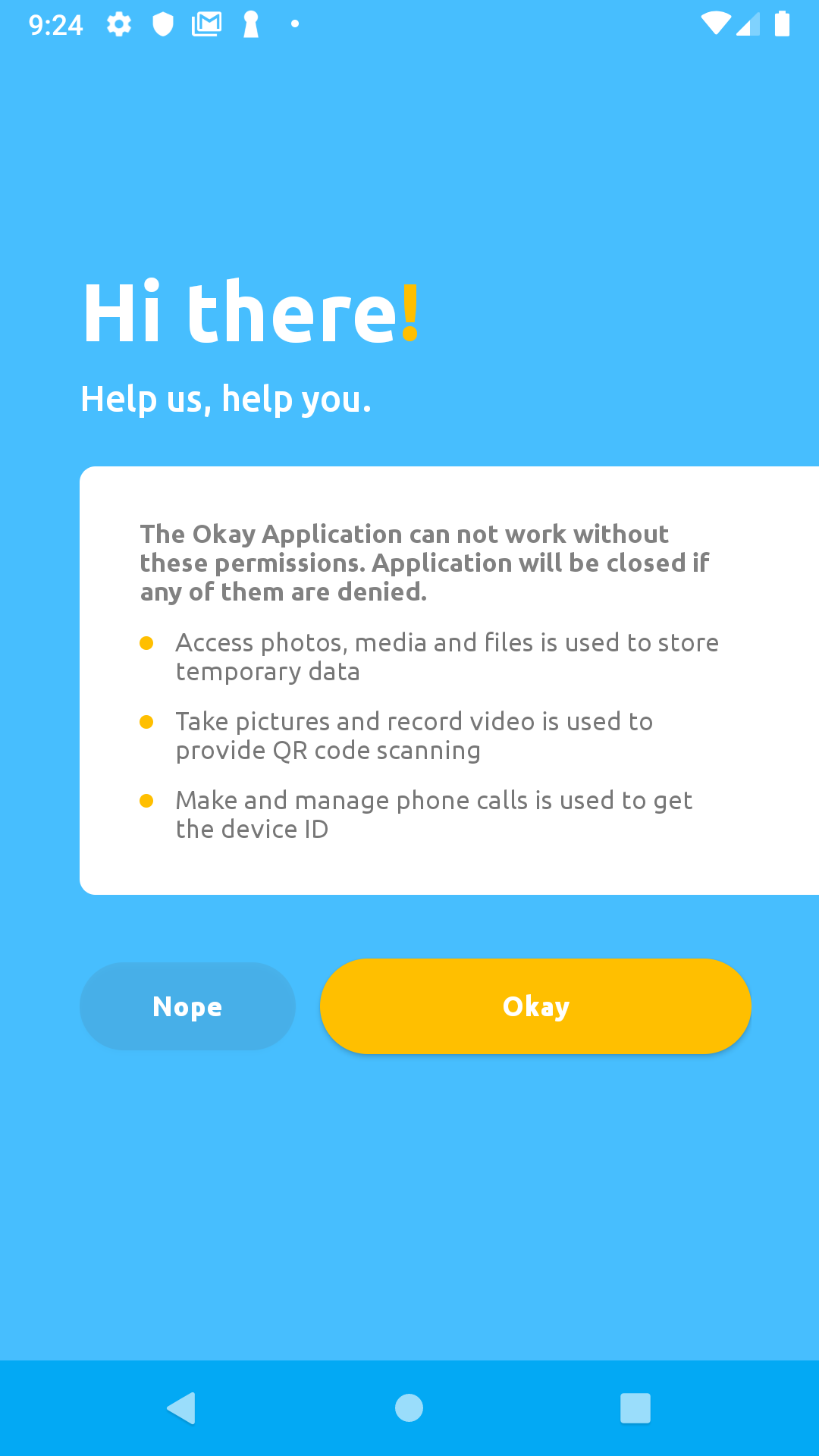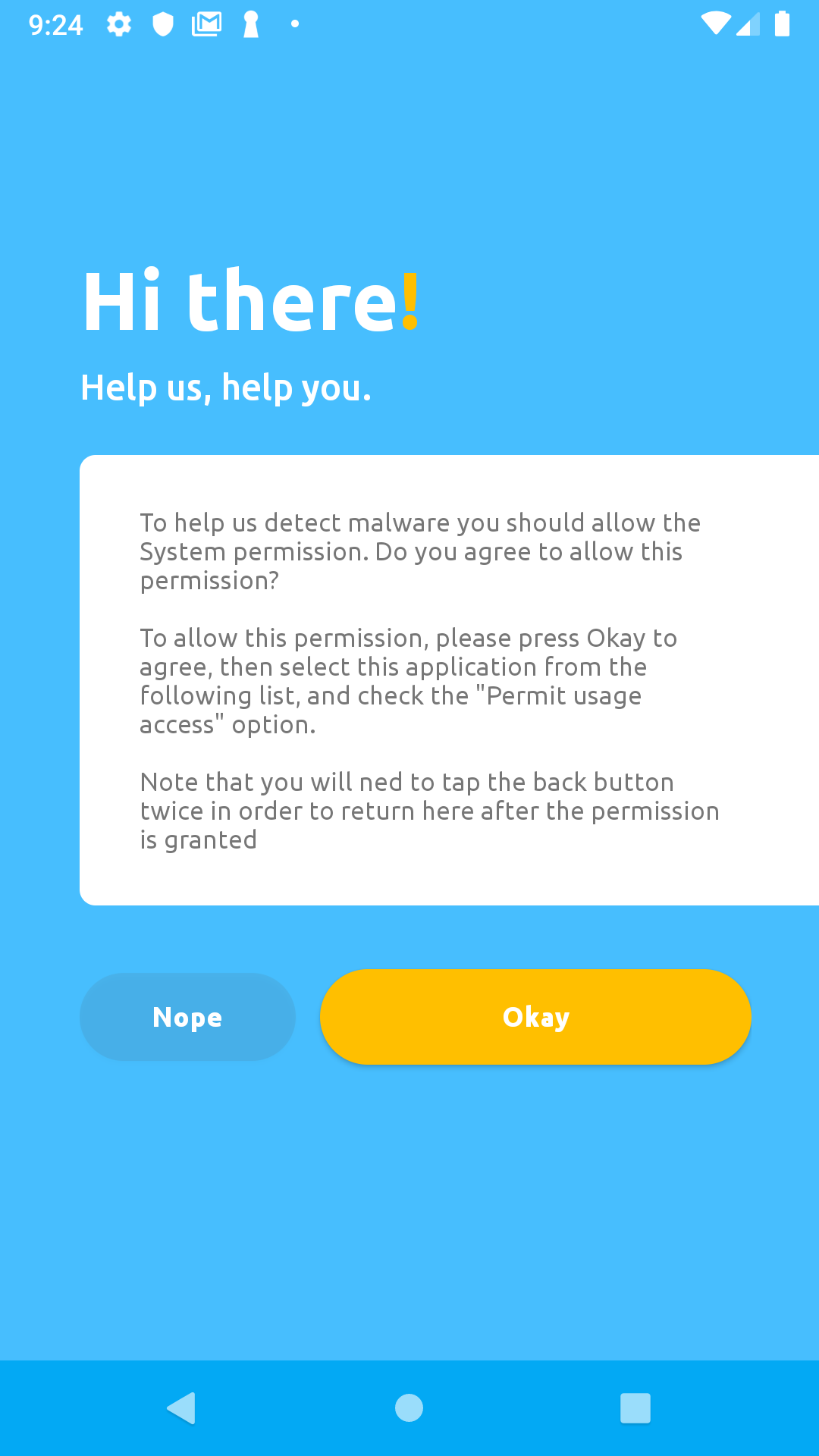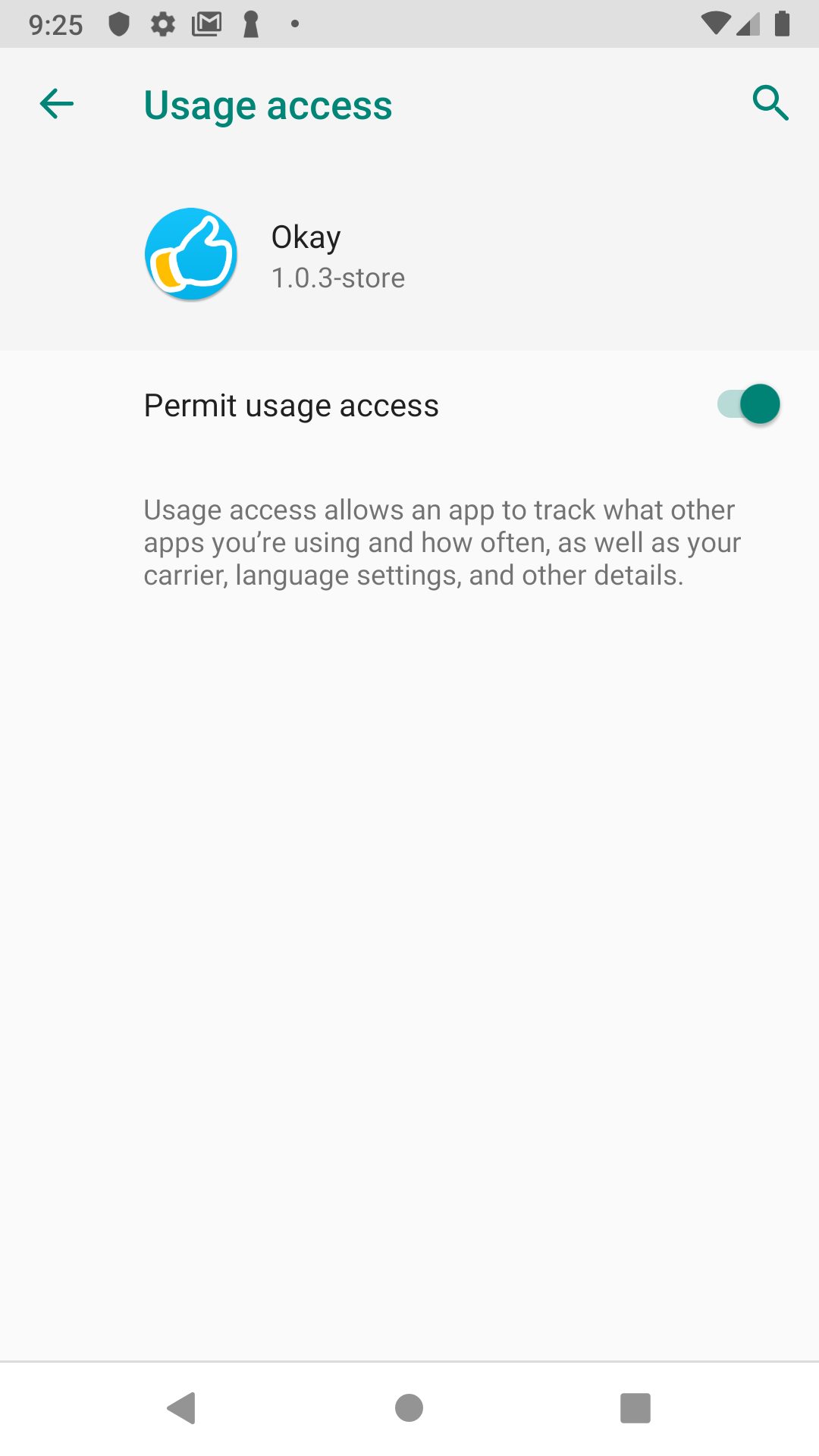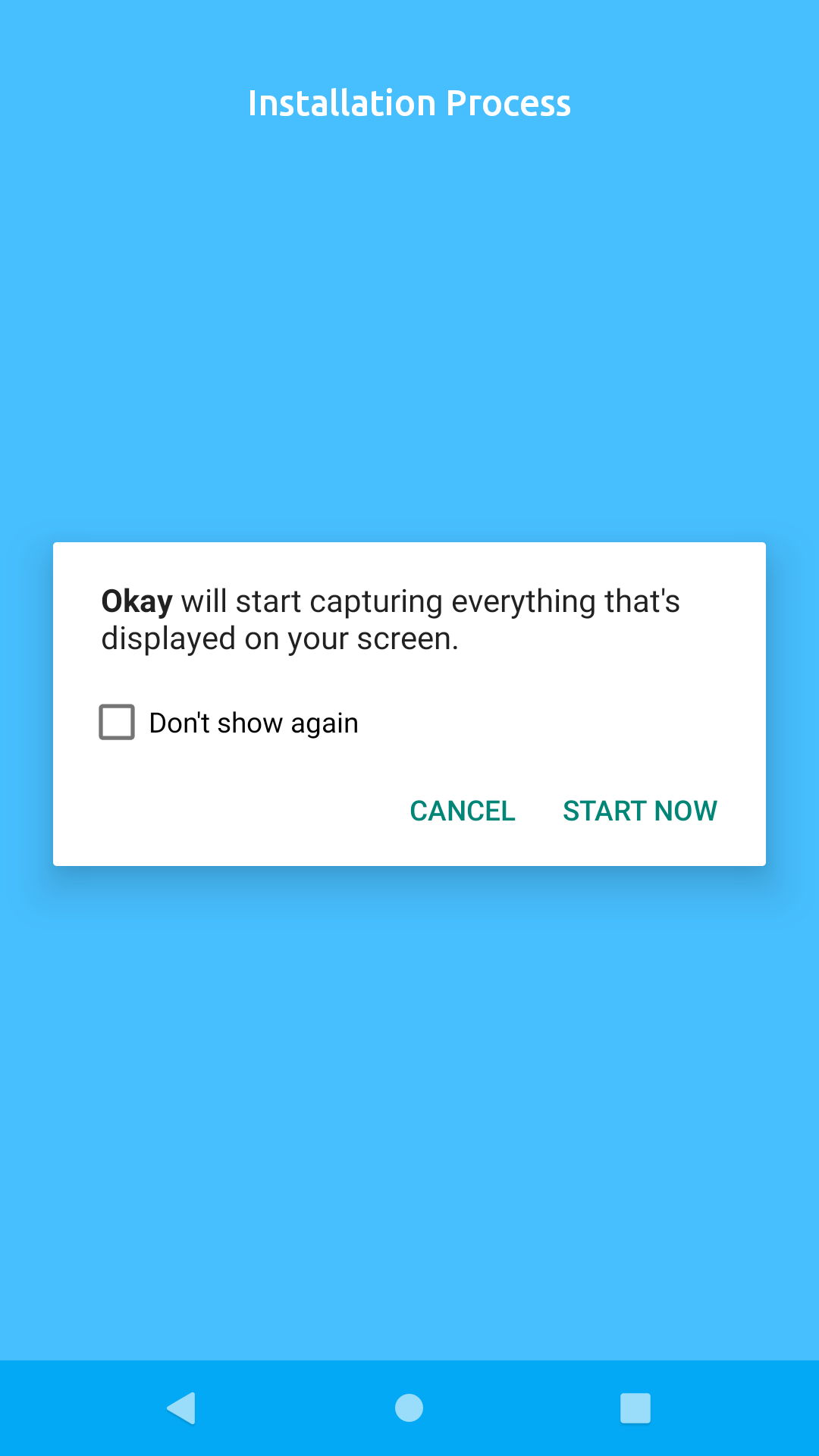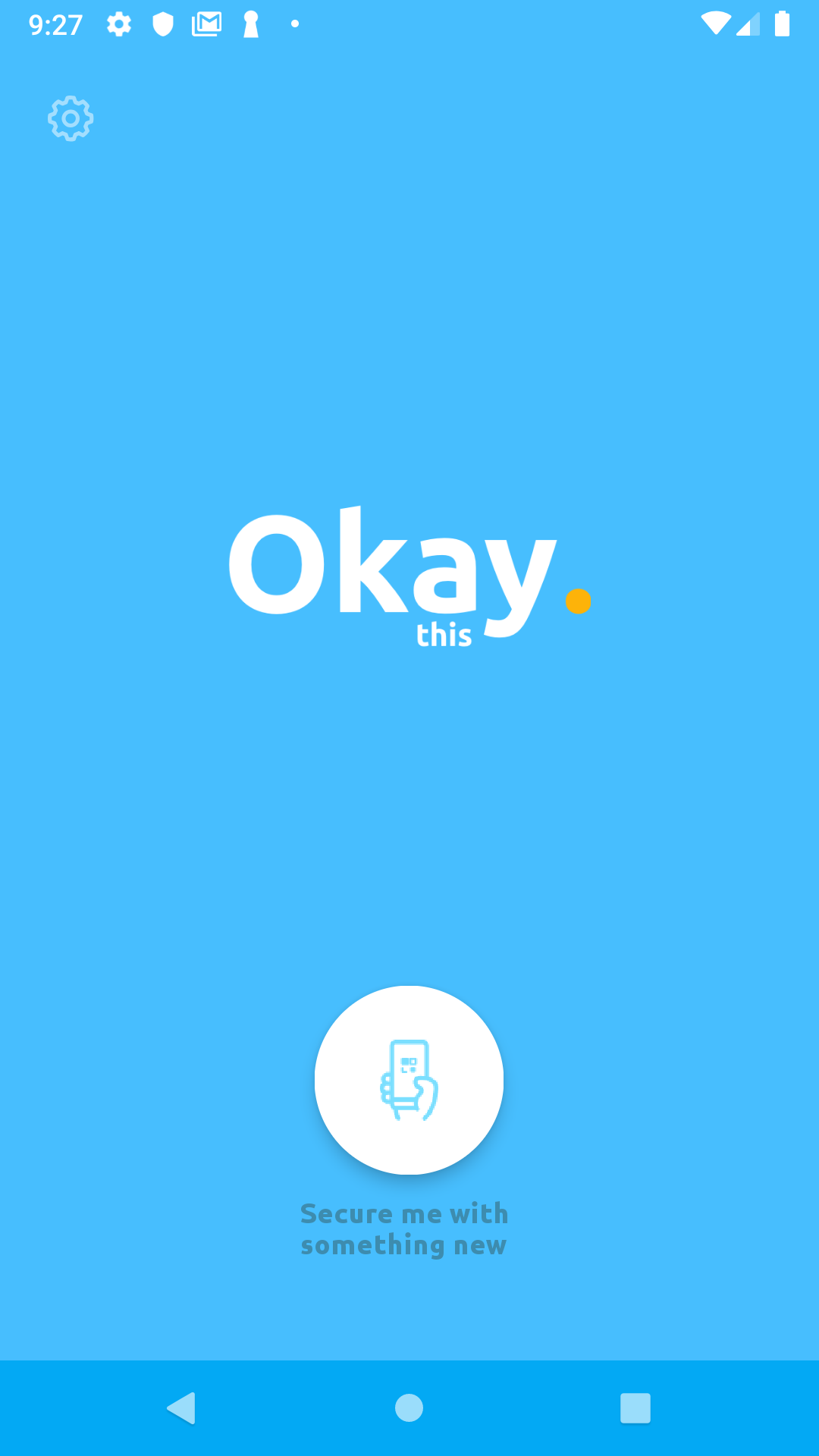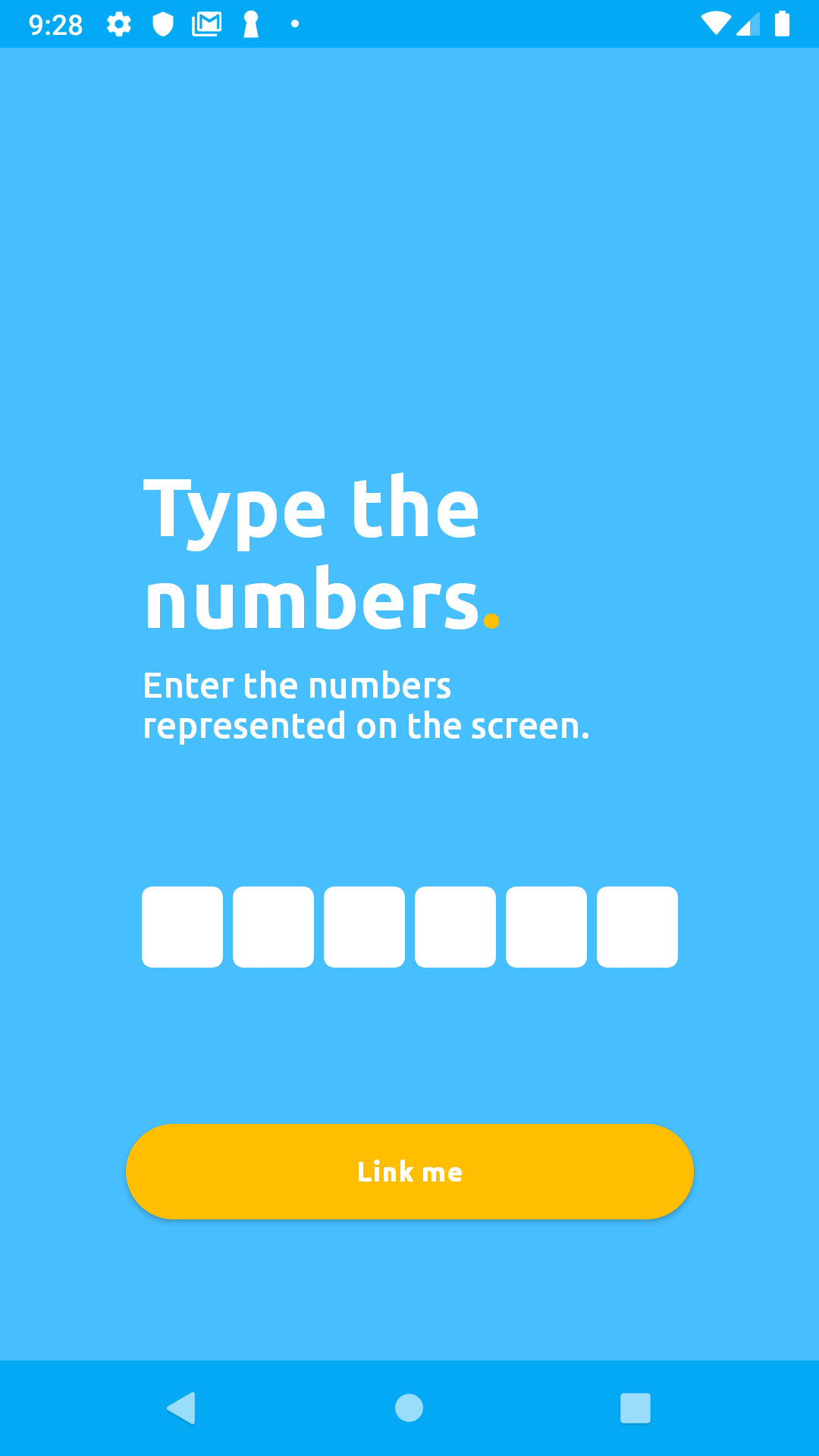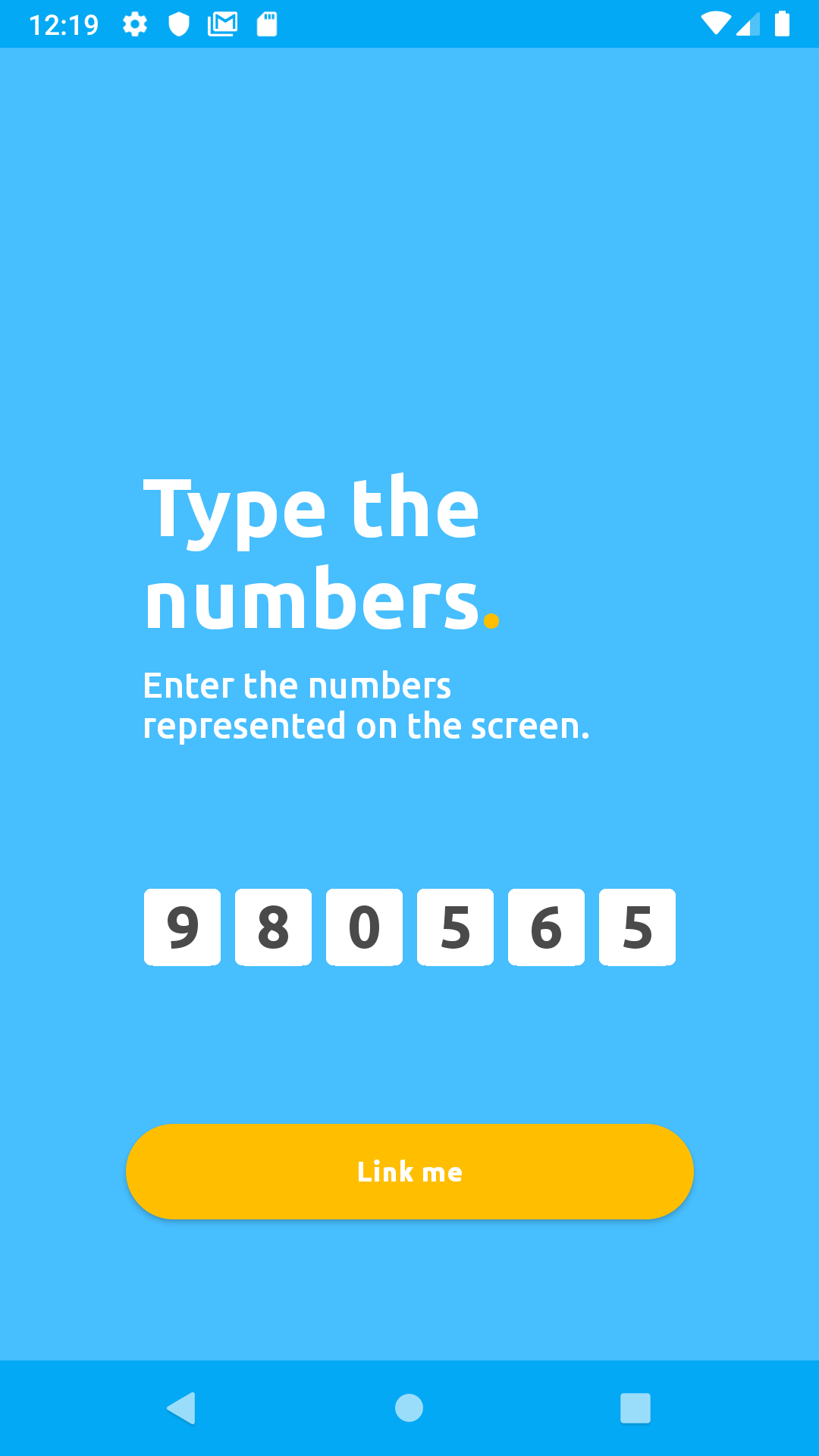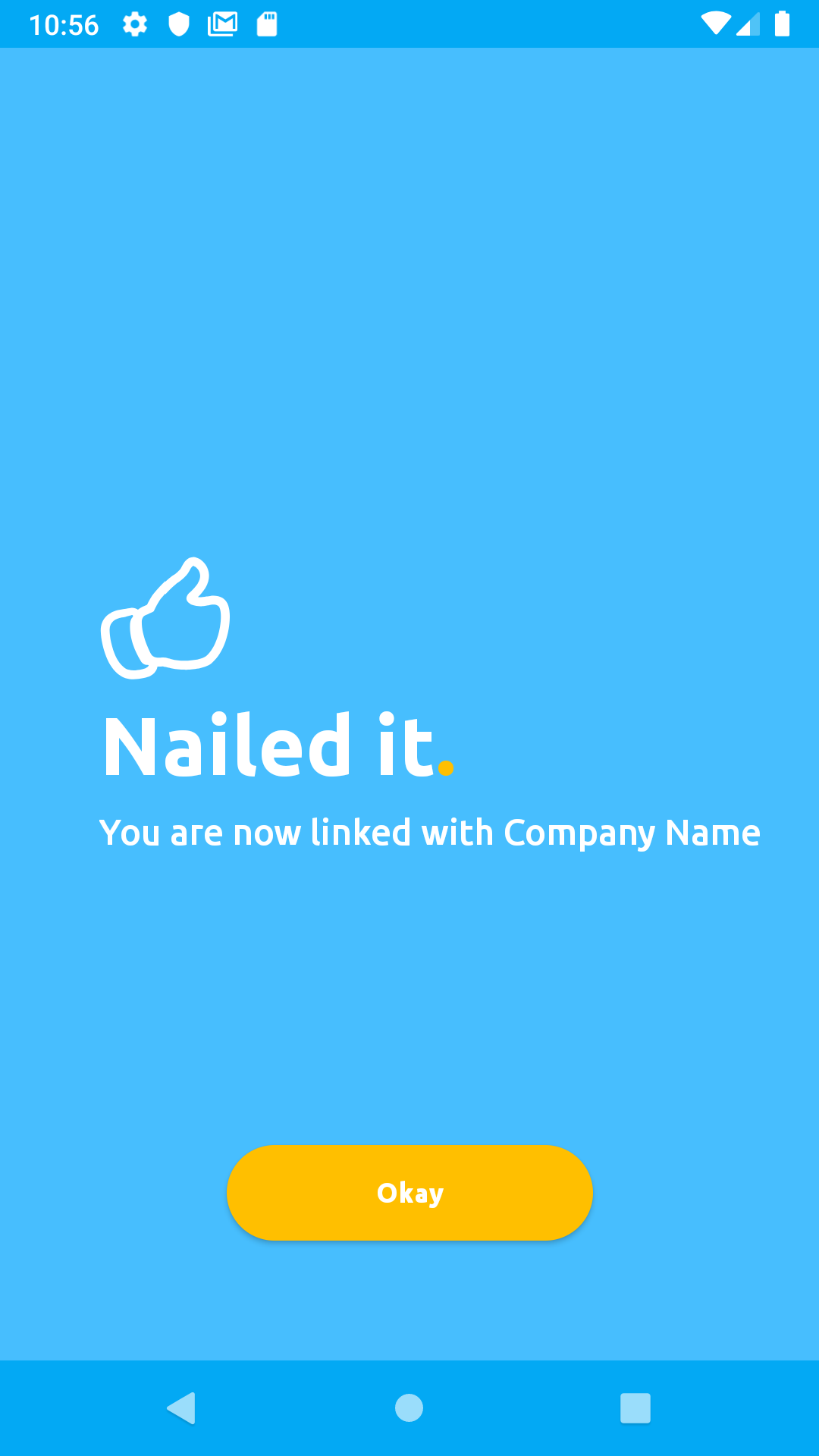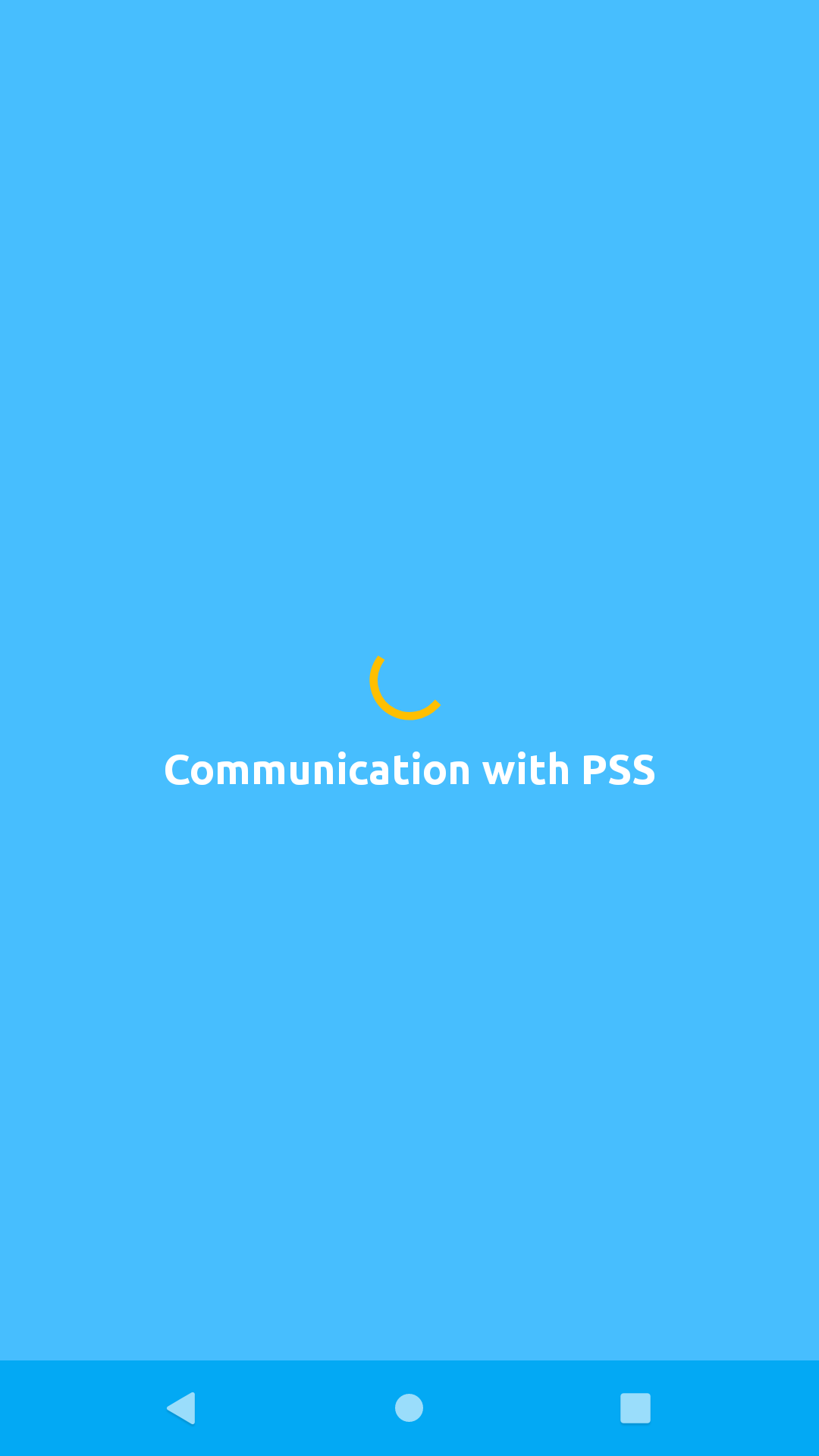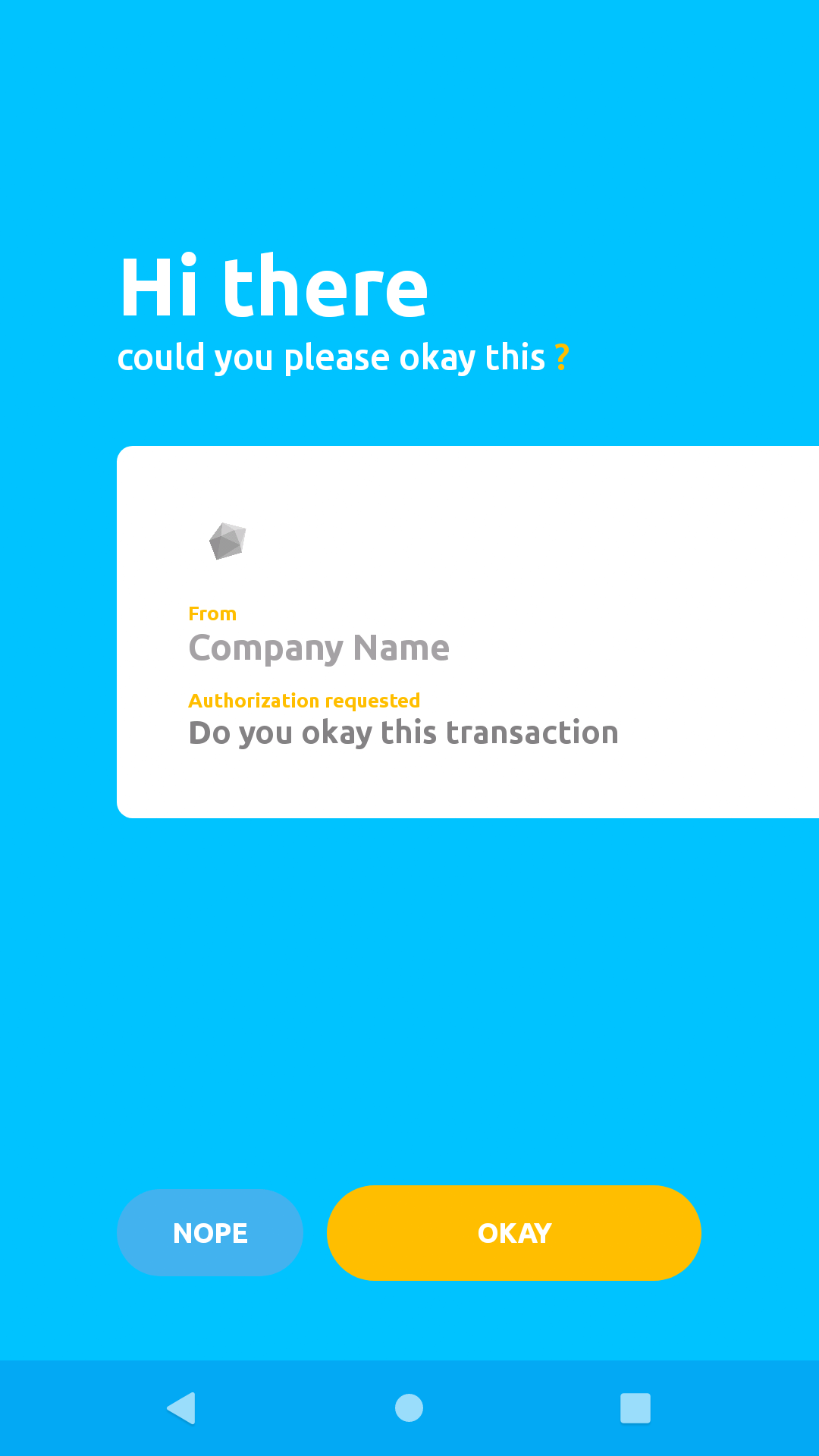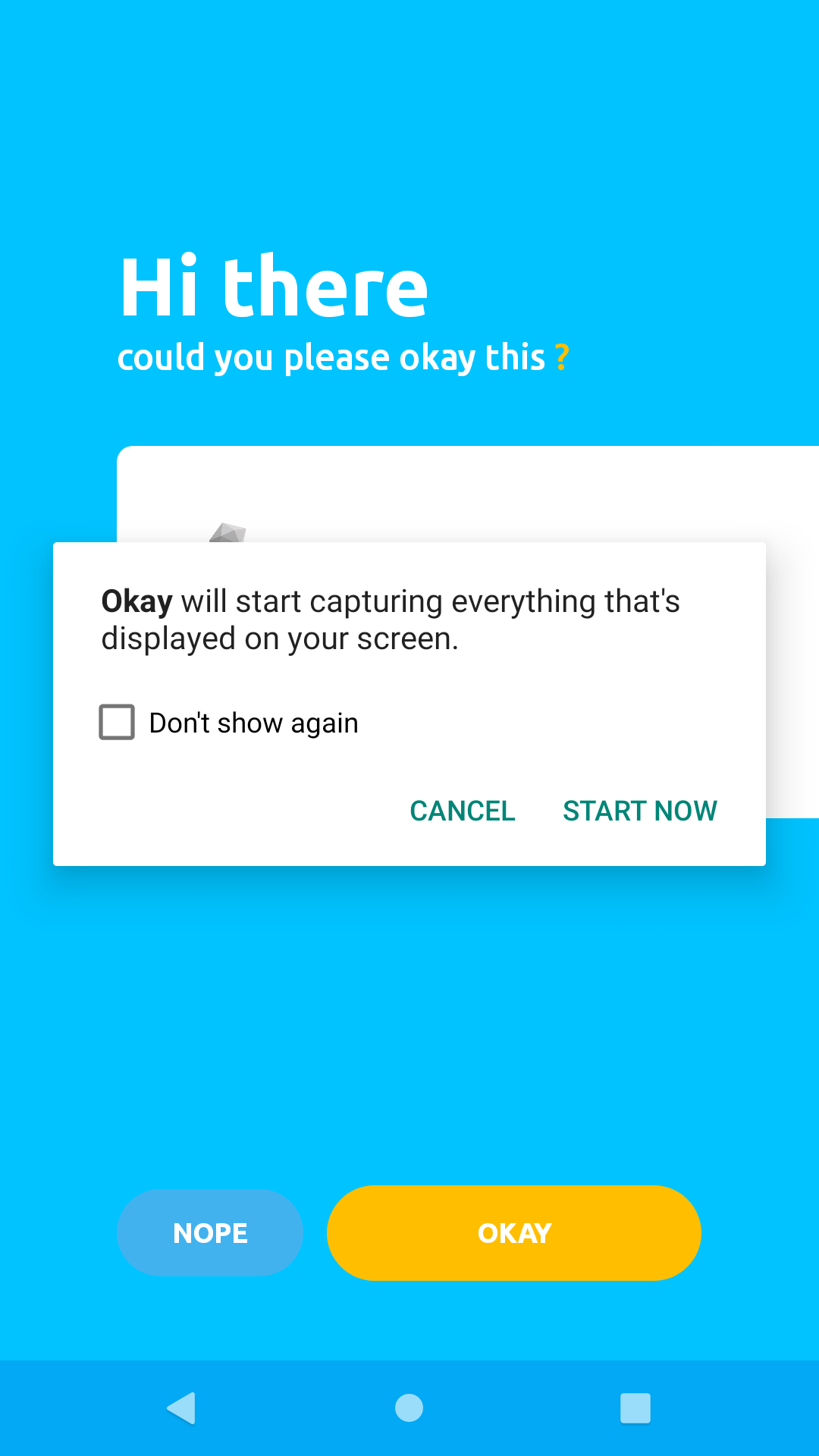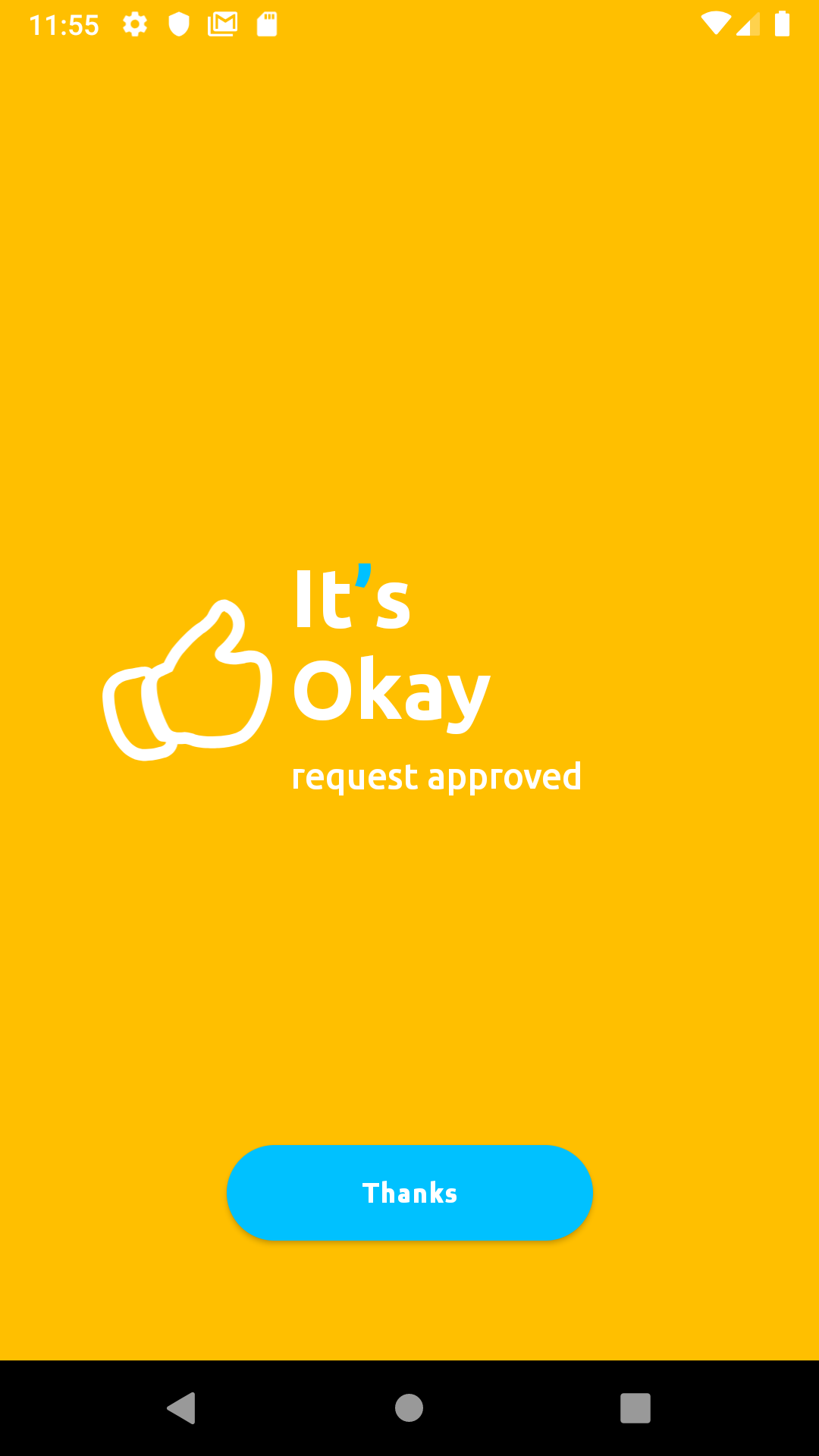To proceed with Okay integration, you are required to create an account using this link. Once you are successfully signed up, login in with the credentials that you used to create the account here.
Once you are logged in to your dashboard click on Tenants in the top toolbar, then select tenants from the drop down menu.
The Tenants web page is where you will register your server as a SPS that will communicate with Okay servers in order to verify/intiate secure transactions/authentications. Your tenant page should present a table that looks like the table below.
As you can see, you already have an entry in the Tenants table. The contents of that row are essential in understanding how to integrate Okay into your server.
The first column under the table is what we refer to as your Tenant ID. In the image above my Tenant Id is 40007. It is very important that you take note of this value as we will be using this value for our transactions/authentication.
The text under the Name column in the Tenants table is the name of the company you provided at the time of your sign up.
Specifies the status of your tenant.
Shows your tenant trial expiration date, if you are still on trial mode.
The Action column has three buttons that allows us to manage our tenant credentials.
To make our tenant useful we will be adding more information to the tenant to connect properly/securely to Okay servers. Click on the pencil icon under Actions to complete the tenant registration.
To be able to recieve feedbacks from Okay servers you will need to add a valid callback url (A callback url is an endpoint on your server that will be used as a point of communication by Okay to notify your server about the status of transactions/authentication) to the Callback input field. We will also need to generate a secret secure token(or secret) that will be used to verify all transactions by Okay secure servers. The token could be any aphanumeric secure string that contains between 0-30 characters and must be kept secret.
Note: we will be referring to our Token as secret in further illustrations.
Before we can authorize transactions using Okay, we need to link our users to Okay so that we can identify all transactions coming from different users.
Before we proceed to linking your users to Okay. We need to generate and store a Unique Identifier for every end-user in order to differentiate all your users. You can use any alpha-numeric character to compose this value, for example a UUID. We will be using this value in all our requests as User Unique Identifier. This normally serves as value to the "userExternalId" key in our payload.
{
"tenantId": "<your tenant id>",
"userExternalId": "User Unique Identifier",
"signature": "BASE64[SHA256(tenantId | userExternalId | secret)]"
}The tenantId key in our payload above, is the ID we got from our Tenants table. Please refer to Integrating Okay to your Server section of this document if you don't already have your tenant id.
The userExternalId key in our palyload above is the User Unique Identifier you created for your users in order to differentiate them as described in the Provide a Unique Value Generator section of this documentation above.
The signature key in our payload above is a hash that is generated from concatenating your tenantId + userExternalId + secret (also know as the Token you added to your tenant) then passing the concatenated string as value to SHA256() algorithm. Then we encode whatever value or string we get from the SHA256() algorithm in BASE64.
const crypto = require('crypto')
const axios = require('axios')
const PSS_BASE_URL = 'https://demostand.okaythis.com';
const tenantId = 40007; // replace with your tenantId
const userExternalId = 'uid406jkt'; // replace with your unique user id
const secret = 'securetoken'; // replace with your secret
const hashStr = `${tenantId}${userExternalId}${secret}`;
const signature = createHashSignature(hashStr);
console.log(signature) // returns zqVmg24iAeAqhKdyFOClJdmaB1NBE4lm4K/xnZUwg7M=
function createHashSignature(hashStr) {
return crypto
.createHash('sha256')
.update(hashStr)
.digest('base64')
}
...If all is set, we proceed to linking our user. To link a user we need to send our JSON payload as a POST request to this endpoint https://demostand.okaythis.com/gateway/link.
const crypto = require('crypto')
const axios = require('axios')
const PSS_BASE_URL = 'https://demostand.okaythis.com';
const tenantId = 40007; // replace with your tenantId
const userExternalId = 'uid406jkt'; // replace with your unique user id
const secret = 'securetoken'; // replace with your secret
const hashStr = `${tenantId}${userExternalId}${secret}`;
const signature = createHashSignature(hashStr);
axios({
method: 'post',
headers: {
'Content-Type': 'application/json'
},
url: `${PSS_BASE_URL}/gateway/link`,
data: {
tenantId,
userExternalId,
signature
}
})
.then((response) => {
console.log(response.data);
})
.catch((error) => {
console.log(error.response.data)
});
function createHashSignature(hashStr) {
return crypto
.createHash('sha256')
.update(hashStr)
.digest('base64')
}When your request is correct you'll get a response with the following body:
{
"linkingCode": "unique short-living code", "eg 416966"
"linkingQrImg": "base64-encoded image of QR code",
"status": {
"code": 0,
"message": "OK"
},
}
Sample Response:
{
"linkingCode": "980565",
"linkingQrImg":
"iVBORw0KGgoAAAANSUhEUgAAASwAAAEsAQAAAABRBrPYAAABhUlEQVR42u3aQXKDMAwFUGVYsOQIHIWjhaPlKBwhSy8yqLIkm9CUNMae6XTme0XMW8WqLCkl/mTdCQwMDAzsb1ggW0PomIkm2e5W3+vAqpk+8zLwg+xYgjDeXoHVsfidT8JY3s5+Cjz7uYA1Y7KE2SmAtWaPC9OVFyKwlizlkF2QH6casCK23YDKliH8clGCFbC89O31Nt7t7VGZB1bEAl3YcwgpY4321yAHO8UsRcsn8ZKZRw37mKK/lcdgZ5itm+WQHORixh/+FsCKWYxtmnKuHjXs4524PwWwU0w35eKjPtZvwtIpEPUMVs/Iyrb+Odr9AayeWdOhzZ0FudVvqdIAq2J+A3r9Jtu9VxpgTVicSOROWY4j5+pdeQx2iu27j9zTzWkWBFbFcu8cmw4NcvIm+uUGBDvBtqm7VRoW7TYCAqtnPrdM02BfyYO1YpyajtXbELB2TH+Ss9SxHk4wwIrZU11hD7G5ixO2AFbPdlP32NOxNdHvhvNgnzL8Xw0YGBjYP2ZfZfRH9E/qf44AAAAASUVORK5CYII=",
"status": {
"code": 0,
"message": "OK"
}
}For better reference to all possible status code and messages you can recieve from Okay server please refer to this link.
In other to test if your server is working properly, we strongly recommend you to download the Okay mobile app from Google Play Store for Android, or Apple App Store for iOS.
After installation proceed to granting the permissions
Click the check box on this screen to grant permision then press the back button twice to return the app.
Grant all permissions
To proceed with linking, click the white button on this screen below.
You will be redirected to a camera screen, click the button at the bottom of the camera screen labeled Type 'em instead to proceed to the linking screen shown below.
Enter the six digits linkingCode you recieved from your linking response into the mobile app's input field, then click Link me on the app. In our case the linkingCode was 980565.
If all goes smoothly, you will see a screen like the one below.
After Linking a user, we can now authenticate that user or authorize the user's action.
Just like linking a user, we will be sending a JSON payload as a POST request to Okay using this link https://demostand.okaythis.com/gateway/auth.
{
"tenantId": "<your tenant id>",
"userExternalId": "User Unique Identifier",
"type": "<Authorization type>",
"authParams": {
"guiText": "message that is shown in the Okay application",
"guiHeader": "header of the message that is shown in the Okay application"
},
"signature": "BASE64[SHA256(tenantId | userExternalId | guiHeader | guiText | type | secret)]"
}For this request, we will be adding two new fields, the type and authParams fields.
The type key in our JSON payload is a field that allows us to clearly specify the kind of authorization/authentication we choose to initiate. The type key can take as value any of these authentication types listed below.
| AUTH TYPE | AUTH CODE |
|---|---|
| AUTH_OK | 101 |
| AUTH_PIN | 102 |
| AUTH_PIN_TAN | 103 |
| BIOMETRIC_OK | 105 |
| GET_PAYMENT_CARD | 111 |
The authParams just contains a message (guiText) and the message header (guiHeader) that will be displayed on the Okay App. The message is intended for the user to read, in order to grant Okay the required permission to complete a transaction/authentication.
We can now proceed to sending our request to Okay like so.
const crypto = require('crypto')
const axios = require('axios')
const PSS_BASE_URL = 'https://demostand.okaythis.com';
const tenantId = 40007; // replace with your tenantId
const userExternalId = 'uid406jkt'; // replace with your unique user id
const secret = 'securetoken'; // replace with your secret
const authParams = {
guiText: 'Do you okay this transaction',
guiHeader: 'Authorization requested'
};
const AUTH_TYPES = {
OK: 101,
PIN: 102,
PIN_TAN: 103,
BIOMETRIC_OK: 105,
GET_PAYMENT_CARD: 111,
}
const type = AUTH_TYPES.OK
const hashStr = `${tenantId}${userExternalId}${authParams.guiHeader}${authParams.guiText}${type}${secret}`;
const signature = createHashSignature(hashStr);
axios({
method: 'post',
headers: {
'Content-Type': 'application/json'
},
url: `${PSS_BASE_URL}/gateway/auth`,
data: {
tenantId,
userExternalId,
type,
authParams,
signature
}
})
.then((response) => {
console.log(response.data);
})
.catch((error) => {
console.log(error.response.data)
});
function createHashSignature(hashStr) {
return crypto
.createHash('sha256')
.update(hashStr)
.digest('base64')
}When your request is correct you'll get a response with the following body structure:
{
"status": {
"code": "<status code>",
"message": "status message"
},
"sessionExternalId": "unique session identifier"
}
Sample Response:
{
"sessionExternalId": 100227,
"status": {
"code": 0,
"message": "OK"
}
}
When the Authentication/Authorization request has been recieved by Okay (PSS) server, it sends a push notification to the Okay mobile app prompting the app to begin the Authentication/Authorization on the mobile device. Okay then presents a screen that look like the one below on mobile app.
If a secure communication channel was succcessfully established, Okay presents the authorization screen.
Click the "OKAY" button to grant authorization.
Click "Start Now" on the modal popup to proceed.
If all goes well, Okay will present a success screen like the one below, to notify you that the request was approved successfully.
For better reference to all possible status code and messages you can recieve from Okay server please refer to this link.
The sessionExternalId can be used to check the status of this request. We will see shortly, in the Check Authentication/Authorization Status section, how we can use the sessionExternalId value retrieved from the response to check the status of our transaction.
After Authorizing/Authenticating a user we can check the status of that request by sending a JSON payload as a POST request to this endpoint https://demostand.okaythis.com/gateway/check on Okay Server.
{
"tenantId": "<your tenant id>",
"sessionExternalId": "sessionExternalId from previous Auth request",
"type": "authorization type",
"authParams": {
"guiText": "message that is shown in the Okay application",
"guiHeader": "header of the message that is shown in the Okay application"
},
"signature": "request signature"
}Send a request to check the status of your transaction.
const crypto = require('crypto')
const axios = require('axios')
const PSS_BASE_URL = 'https://demostand.okaythis.com';
const tenantId = 40007; // replace with your tenantId
const sessionExternalId = 100227; // "replace with your 'sessionExternalId' from previous Auth request
const secret = 'securetoken'; // //replace with your secret
const hashStr = `${tenantId}${sessionExternalId}${secret}`;
const signature = createHashSignature(hashStr);
axios({
method: 'post',
headers: {
'Content-Type': 'application/json'
},
url: `${PSS_BASE_URL}/gateway/check`,
data: {
tenantId,
sessionExternalId,
signature
}
})
.then((response) => {
console.log(response.data);
})
.catch((error) => {
console.log(error.response.data)
});
function createHashSignature(hashStr) {
return crypto
.createHash('sha256')
.update(hashStr)
.digest('base64')
}When your request is correct you'll get a response with the following body structure:
{
"status": {
"code": "<status code>",
"message": "status message"
},
"authResult": {
"dataType": "<result data type code> eg. 101, 102, 103",
"data": "user response eg. CANCEL, PIN, OK"
}
}
The authResult field may contain any of these values from the table below, as a user response from the mobile app.
| DataType | Data |
|---|---|
| 101 | CANCEL |
| 102 | PIN |
| 103 | OK |
Some actions might take users some time to accomplish. To prevent long lasting requests and overloading the Okay server with enormous amount of the Check requests, Okay server sends callbacks when the long lasting action is completed. The target URI should be configured at the Okay website on the Tenant Settings page.
Note: every callback has a signature value. Check it to make sure the request is received from the Okay server.
When an end user completes linking, Okay server sends the following JSON data to the callback url that was specified on the tenant settings page:
{
"type": 101,
"userExternalId": "unique user identifier",
"signature": "callback signature"
}Check Callback Types page for all available values of type.
Okay sends this JSON body when a transaction response from Okay mobile application is received.
{
"type": 102,
"userExternalId": "unique user identifier",
"sessionExternalId": "unique session identifier",
"authResult": {
"dataType": "<result data type code>",
"data": "user response"
},
"signature": "callback signature"
}
The authResult key in the response above, has the same structure as the authResult returned from Check Authentication/Authorization Status request.
When an end user removes your service from the list of connected services from Okay, Okay sends to your server via the callback url a JSON response having the structure below:
{
"type": 103,
"userExternalId": "unique user identifier",
"signature": "callback signature"
}dataTypeshould be replaced withstatusCodewhiledatashould be replaced withmessageonauthResult.- If the check endpoint
https://demostand.okaythis.com/gateway/checkonly checks the status of transactions/authentications then, sending theauthParamsfield as part of the payload might be an unneseccary overhead. - I think
typeshould be renamed toauthTypeon the Check/Auth payload. sessionExternalIdkey on Check Authentication/Authorization Status payload should be thesessionExternalIdthat is returned from the previous Authentication request to the PSS and not userExternalId.- Using terms like
ServerLinkUserResponse,ServerAuthUserResponse,ServerAuthUserCallbackand the likes may not be easy to understand, especially to those persons who do not have a Java background. - There is no clear instructions as to how to integrate the Okay app to the backend.
- The Docs lack clarity about.
Authorization typesshould be listed on the docs.
Tenant Management
GET
/api/tenants/{tenantId} (Gets tenant by id)
/api/tenants/{tenantId}/transaction-limits (Gets tenant's transaction limits)
/api/tenant-linkings (Gets all tenant linkings that satisfy query)
/api/tenant-sessions (Gets all tenant sessions that satisfy query)
/api/tenants/{tenantId}/integrity (Gets tenant's integrity settings)




